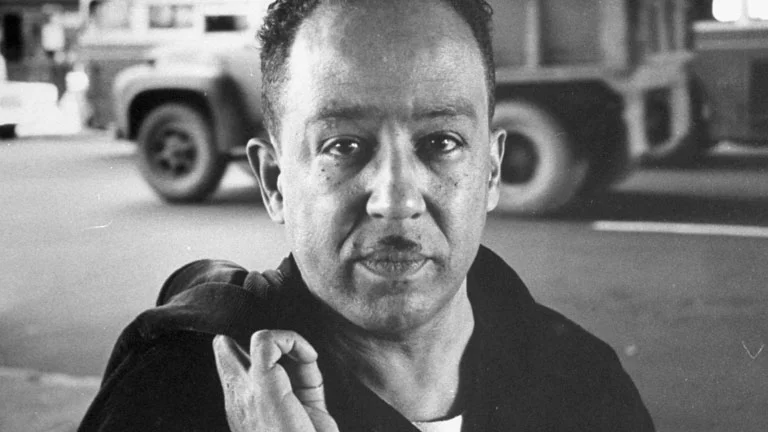Langston Hughes
1902 - 1967
Literary marvel James Mercer Langston Hughes was born in Joplin, Missouri. Hughes and his mother moved between multiple cities before settling in Cleveland, Ohio. He remained in Cleveland till leaving for college. Hughes didn't waste any time sharing his genius with the world. Upon graduating from high school, Hughes published his most iconic poem "The Negro Speaks of Rivers." Despite his youth, Hughes gained a large audience for The Negro Speaks of Rivers by publishing in The Crisis, an NAACP magazine. This poem celebrated African culture in a way that Americans had never experienced in print.
It was during Hughes' studies at Columbia University when his eyes were opened to the Harlem art scene. Hughes wove the rhythm of jazz and energy of blues and other music, into his poetry. His talent and popularity never detracted from who he was as a creator or collaborator. Many young artists and writers got their start thanks to the connections and relationships that Hughes built over the years.
Hughes played a vital role in the history of American literature. Critics speculate whether Hughes wrote while struggling with personal demons. His writing reached a level of depth and clarity only thought possible by using rage and despair as inspiration. Hughes' poetic voice fused formal poetry with rhythmic poetry meant for a listening audience.
In addition to the role Hughes played in shaping twentieth century poetry born of the Harlem Renaissance, Hughes provided a necessary reprieve from expectations of Black creators to simply follow the mold established by members of dominant culture. Hughes condemned Black people for attempting to assimilate for the sake of fitting in. Hughes questioned not only the authenticity of Black people devoting time to present themselves as white, but also the integrity and soul of Black people who refused to proudly declare and showcase their blackness.
With biting realism and unapologetic promotion of blackness, Hughes asked a series of questions related to assimilation in the legendary essay The Negro Artist and the Racial Mountain:
Without going outside his race, and even among the better classes with their, “white” culture and conscious American manners, but still Negro enough to be different, there is sufficient matter to furnish a Black artist with a lifetime of creative work. And when he chooses to touch on the relations between Negroes and whites in this country with their innumerable overtones and undertones, surely, and especially for literature and the drama, there is an inexhaustible supply of themes at hand. To these the Negro artist can give his racial individuality, his heritage of rhythm and warmth, and his incongruous humor that so often, as in the Blues, becomes ironic laughter mixed with tears... This is the mountain standing in the way of any true Negro art in America.
Hughes' avant-garde rejection of assimilation took many by surprise and received sweeping condemnation. But to his credit, Hughes stood by his harsh condemnation of assimilation.
The literary and historical importance of Hughes' poem titled "Harlem" will likely never be forgotten. A line was utilized by playwright Lorraine Hansberry who wrote the play A Raisin in the Sun in 1959. To this day, Harlem remains a centerpiece of inclusive English curriculums in the United States.
"Harlem" by Langston Hughes:
"What happens to a dream deferred?
Does it dry up like a raisin in the sun?
Or fester like a sore and then run
Does it stink like rotten meat?
Or crust and sugar over like a syrupy sweet?
Maybe it just sags like a heavy load. Or does it explode?"
























